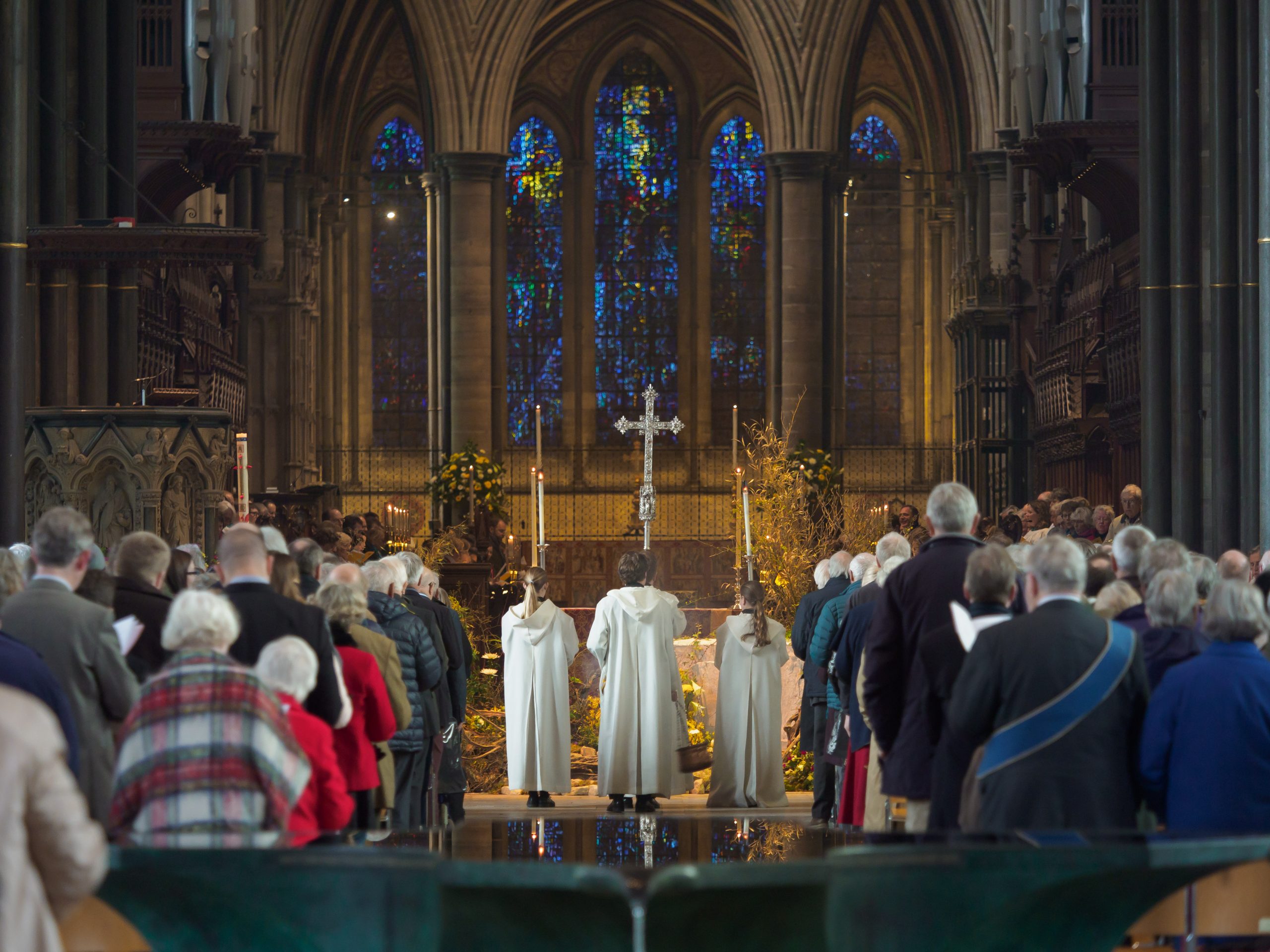Magi or Kings?

A sermon preached by Canon Kenneth Padley, Treasurer.
Friday 06 January, a sermon on The Epiphany.
Matthew 2.1-12
We three kings of orient are
One in a bus and one in a car
One on a scooter blowing his hooter,
Smoking a rubber cigar.
Given their diverse travel arrangements, I am amazed that the wise men managed to coincide their arrival in Bethlehem with one another. I also wonder why the car driver didn’t offer the others a lift. Maybe he didn’t appreciate the smell of rubber cigar smoke.
This piece of playground doggerel highlights how perceptions of the narrative recounted in Matthew chapter 2 have evolved over the years. We heard a story about unnumbered wise men. But in the popular imagination they are cast as three Gentile kings. How did the strict biblical picture mutate into the widespread public image?
The earliest magi were the priestly caste of the ancient Persians. By the time of Jesus, use of the term had broadened to include soothsayers, astrologers and sages – individuals who made their living pretending to look into the future. Given the nature of this work, it is not surprising that magi were often derided as deceivers and quacks – people who manipulated truth for personal gain.
Despite this mixed reputation, it was magi whom Matthew envisaged when he wrote his second chapter. So how and why did they become three Gentile Kings?
Ancient sources speculate on the number of the wise men. Matthew’s Greek is clear that they were plural, but doesn’t reveal how many. Later writers claimed that there were two, others four, eight, or even twelve. It is fairly easy, however, to see why we have settled on three, one for each of the gifts: gold, frankincense and myrrh.
It is also easy to see why the tradition has emphasised that the magi were Gentiles (non-Jewish people). Matthew himself makes a play on this. On the one hand, Matthew saw Jesus as the true Jewish king: his genealogy in chapter one insists that Jesus was a descendent of the heroic King David – contrast the wicked King Herod who was known to be not of the Davidic line. On the other hand, Matthew’s irony is that foreign sages recognise the truth about Jesus’ identity which the Jewish Herod cannot, thus reinforcing the illegitimacy of Herod’s rule while simultaneously redefining God’s covenant people as inclusive of non-Jews.
Later Christians set much store by this notion that non-Jews visited the baby. Early Christians living in the Greek and Roman worlds were delighted to find representatives of their own culture beside the cradle. It was also good for apologetics. They could turn to their neighbours and say, ‘see, Christianity isn’t a whacky eastern sect – all nations come to this child.’
If this emphasis on the magi as Gentiles reflects the mission and power-games of the early Church, it also nods towards why the wise men came to be understood as kings. If kings were seen adoring the baby Jesus, it only added to his importance.
So we have unraveled how the unnumbered wise men of Matthew became the three Gentile kings of contemporary nativity scenes. But both images actually reflect aspects of gospel truth.
Christians believe that wisdom leads people to Jesus. A few years ago I received a Christmas card with the simple message,
‘Dear Kenneth, Happy Christmas.
Wise men follow him still.’
It’s a bit hackneyed. But it’s also profoundly true.
Kings would also do well to follow Christ. We want our rulers to worship the baby. We want Christian values embedded in how the world is run because we believe the gospel is about earthy justice and not just heavenly hope. And so we pray for our leaders, for the king and all in authority under him, and for the rulers of all nations, most especially for those whose rule is an aberration of the gospel.
A footnote about the afterlives of the wise men. Just as we don’t know where they came from, we don’t know what happened to them afterwards. But legends grew up, legends which lead us to the most popular tourist attraction in Germany, Cologne Cathedral. At the heart of this gobsmacking gothic edifice is the largest single work of gold in existence. Over a fifty-year period in the twelfth and thirteenth centuries, it was fashioned as a reliquary in the workshop of Nikolaus of Verdun, a sarcophagus for the remains of the magi. ‘I saw three ships come sailing in’ is, in part, a poem about the arrival of their bones into Cologne.
Of course, the wise men are not in that reliquary so lavishly crafted by Nikolaus of Verdun! Whatever the origins of Matthew chapter 2, I suggest that the historicity of the magi is secondary to their meaning: the wonder which draws pilgrims to Cologne echoes the role of the wise men in Matthew’s nativity. Whoever they were (or were thought to have been), whatever they did (or were thought to have done), wherever they rest (or are thought to be buried), the wise men have done their job, because they still point to the one who is the king of all, and still urge us to follow their wisdom.
Amen.




